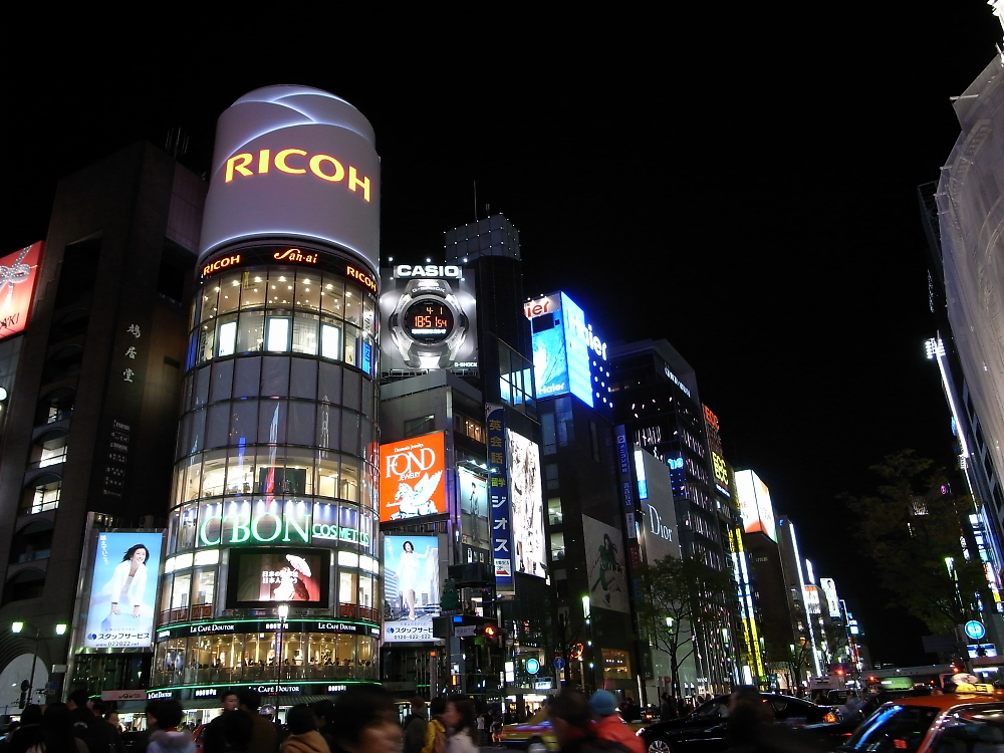Hello! It’s Machuko@- the admin.
Ricoh Imaging Square Ginza was closed on Saturday, February 29, 2020.
I wondered if there was anything I could do for this opportunity. Then I thought it would be great to ask Mr. Mori, the director of Ricoh Imaging Square Ginza, and Mr. Ikenaga, the gallery director, to share their thoughts. The Former Ricoh manager Noguchi, who had been deeply involved since the launch of “RING CUBE”, also joined them.
I spoke to them about this idea a few days before closing and went to Ricoh Imaging Square Ginza to hear their opinions.
It's a bit too long, but I will be glad if you can read what they have to say about the 12 years since its opening and their thoughts on gallery.
I will also report a little bit on the last day!
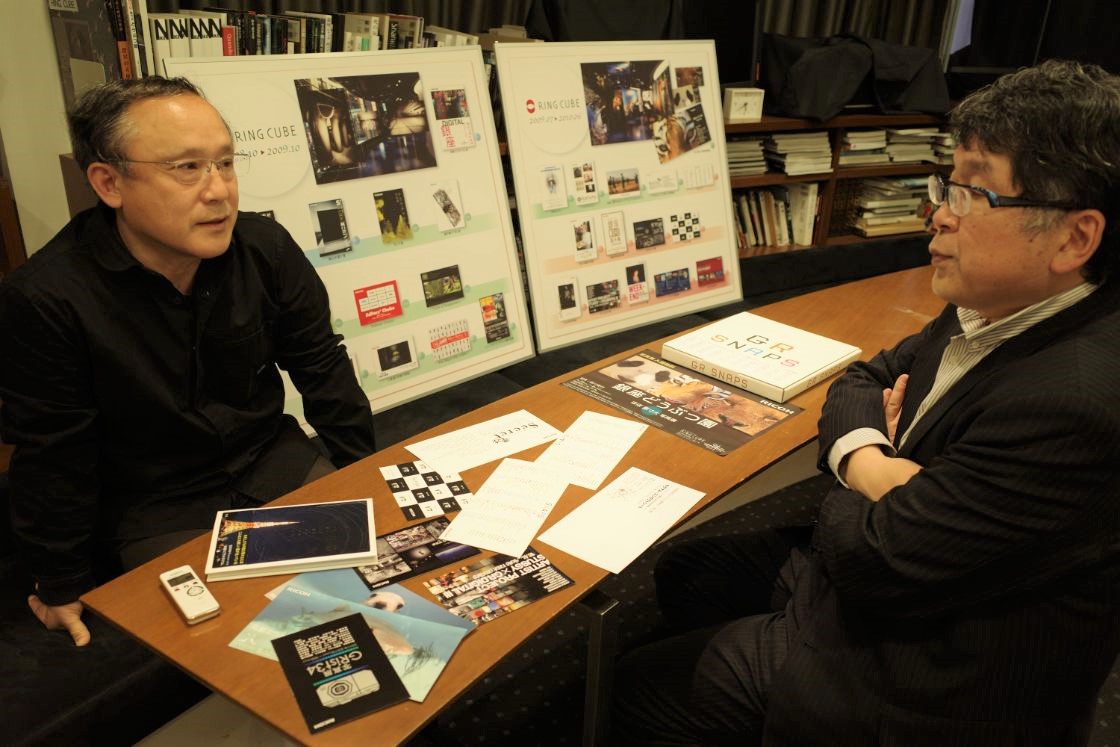
Noguchi (hereafter: N): How many years have you worked here?
Mori (hereafter: M): Eight years. There was an internal recruitment in 2010 and I applied for it.
At the time of the interview, I was told that there would be more ladies involved than normal departments, so I answered yes. I've been here since October 2011.
N: I thought you were here from the launch, but I was wrong (laughs). What was the hardest thing in the eight years?
M: I've made a lot of big mistakes! So I don’t want to answer that question! But I had a lot of fun as well, so they offset each other (Laughs)! When I first came here, I liked photography but I was an amateur at exhibiting, so it was very tough. I studied a lot. I was taught a lot and got scolded a lot (Laughs). Maybe it was around July 2012? The exhibit I remember particularly is “Tokai no hoshi (Urban Stars)” because it was the first exhibition I was in charge of. That must have been the last exhibition for "RING CUBE” too.
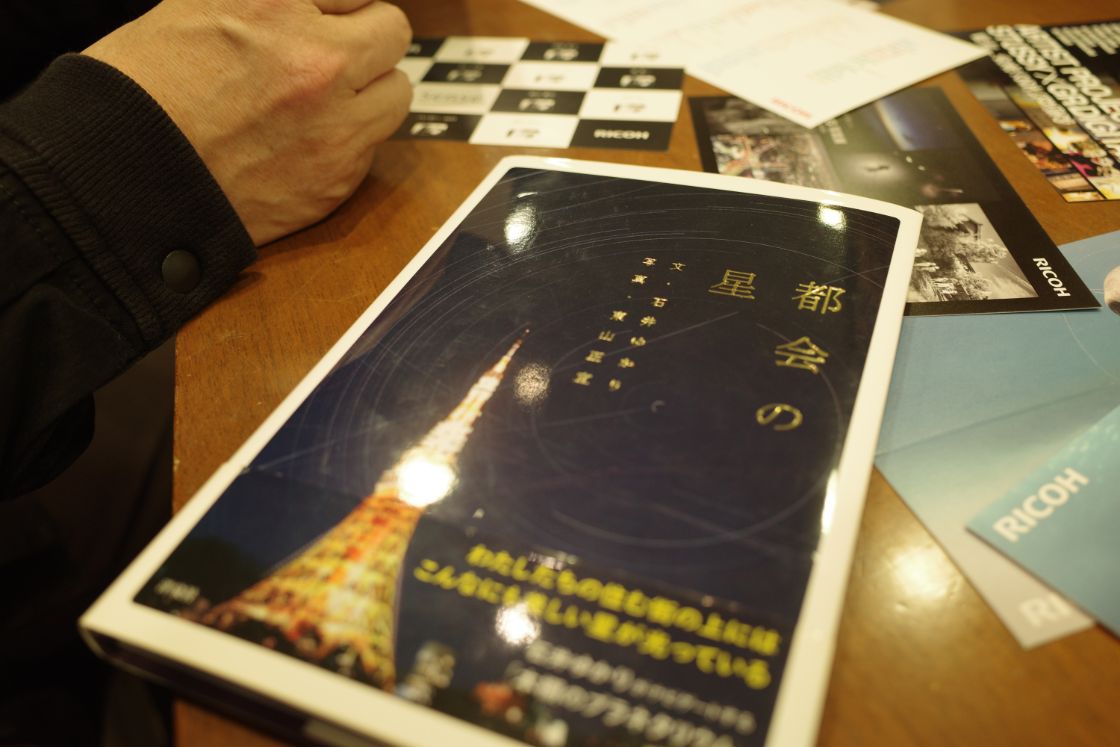
Mori's most memorable exhibition “Tokai no hoshi (Urban Stars)”
N: After that, we renewed it.
M: We renewed “RING CUBE” as “Ricoh Imaging Square Ginza” and started the gallery “A.W.P”. Mr, Ikenaga has been in charge of that, so let's hear what he has to say later. What was your most memorable exhibition at RING CUBE?
N: The very first exhibit at RING CUBE was by Daido Moriyama. It was really cool. It looked like photos were floating in the town of Ginza. Also, “Ginza Zoo” by Takayuki Maekawa. We had life-size pictures of animals. It was really good, too. At the time of RING CUBE, we changed everything for each exhibit like that. For a railway photo exhibition, we made railway-ticket-like tickets and punched them at the reception etc. We could never be satisfied with just exhibiting them normally (laughs).
M: The ways photos were displayed were unique.
N: We sometimes put them up on the ceiling and on the floor. It must have been hard for the staff, but every time we had new surprises and discoveries. We changed the color temperature of the lighting each time. Every time we planned, we began with deciding whether to open or close the curtain.
M: The gallery is structurally unusual, impossible, because when you exhibit photos, you usually want to have specific amount of light and space, but here, the windows are open (laughs) and the light is mixed with the one coming from the windows. Plus the natural light changes with time. It was very new. It was part of the work.
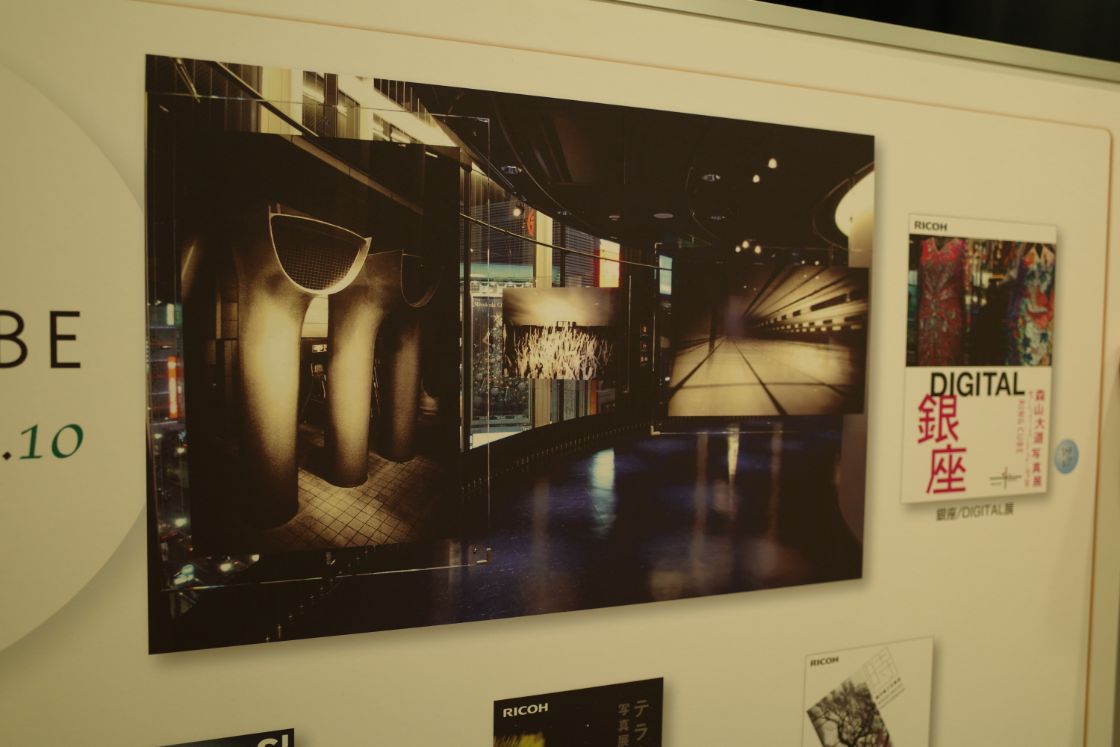
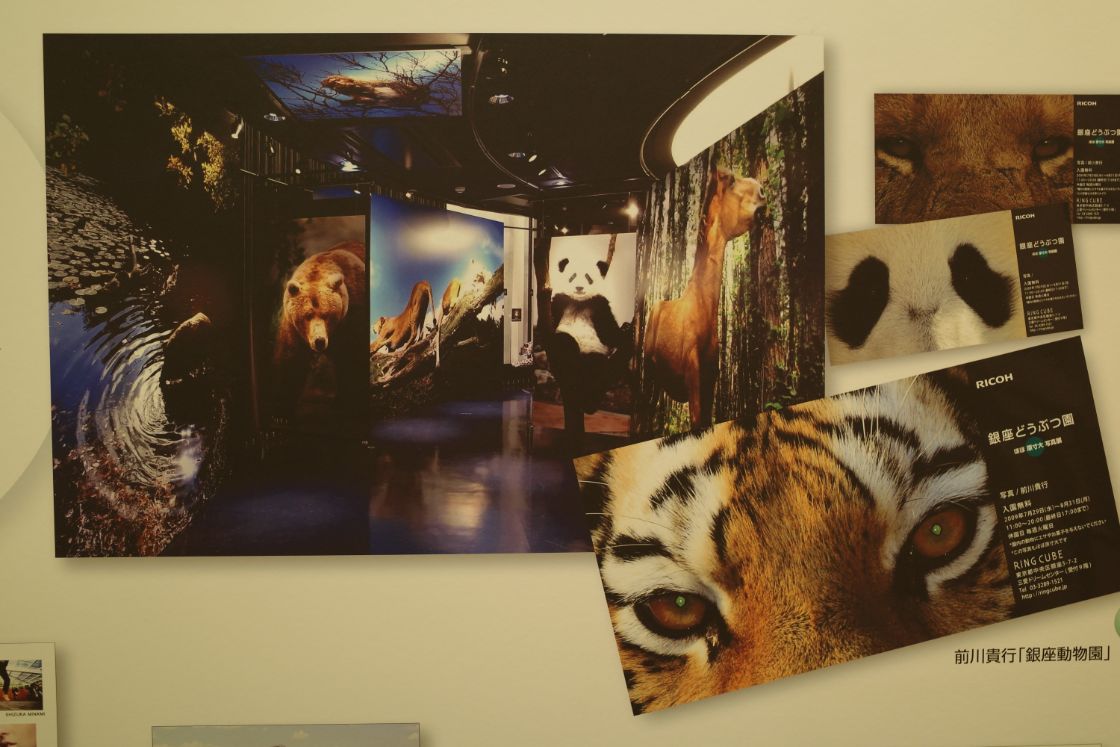
Daido Moriyama Exhibition and Ginza Zoo
N: In "Editors' Choice", the editors-in-chief of several magazines recommended one photographer each and we exhibited their work. Kentaro Komun, who is now popular, was one of them. We were making a fuss and screaming in a way but smiling at the same time. Every time we did, we didn’t want to end with "then next is such and such exhibition”, you know. “The secret" exhibition was the realization of management policy of RING CUBE. "SNAPS" by 120 creators, an exhibition linked with GR BLOG, a GRist group exhibition, and the Stussy project etc. We achieved a lot because we had no gallery experience and were fearless.
M: The staff from the opening often said "you can only see it here."
N: The activity of the volunteer group "Doughnuts" was also significant. It was our experiment to keep a balance between club like activities and corporate quality and give them forms. They went so far as to publish a photobook by Yoshihiko Ueda.
M: The members often stop by even after they were dismissed.
N: And 2011, when Mori came, was the year of the Great East Japan Earthquake. I remember we discussed and, probably for about six months, donated 100% of the sales here.
M: I think it was being continued when I started working here. Instead of keeping pace with others, we decide ourselves. Okay, let's go talk with Mr. Ikenaga about A.W.P now.
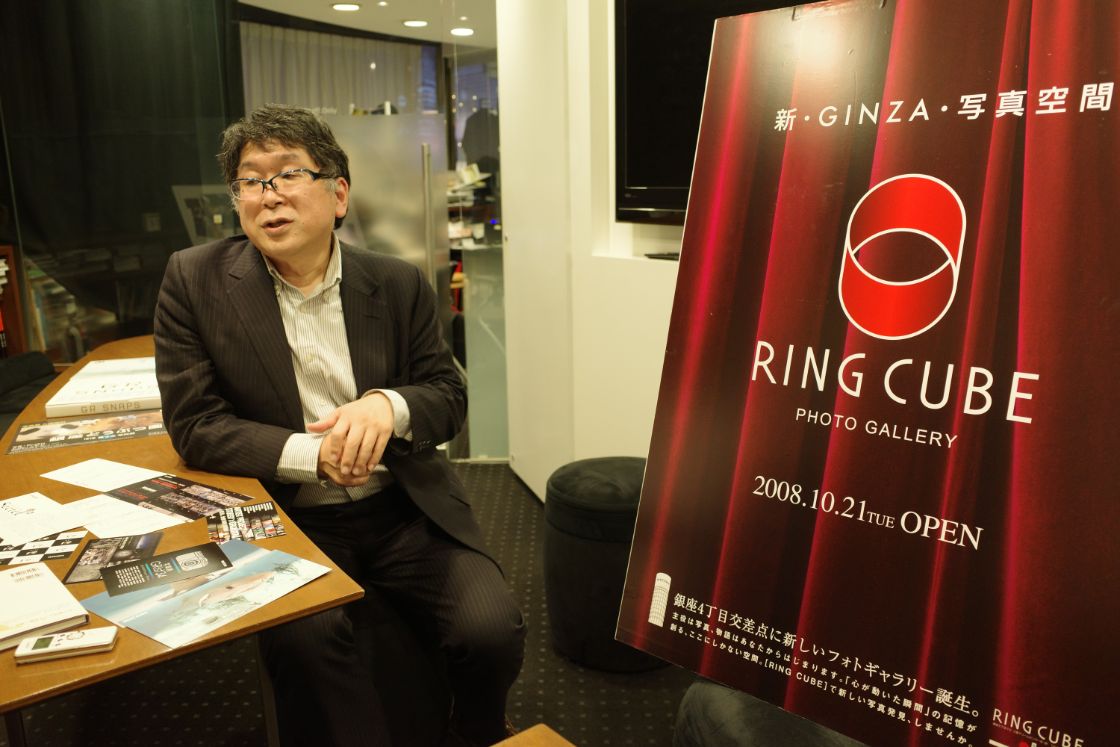
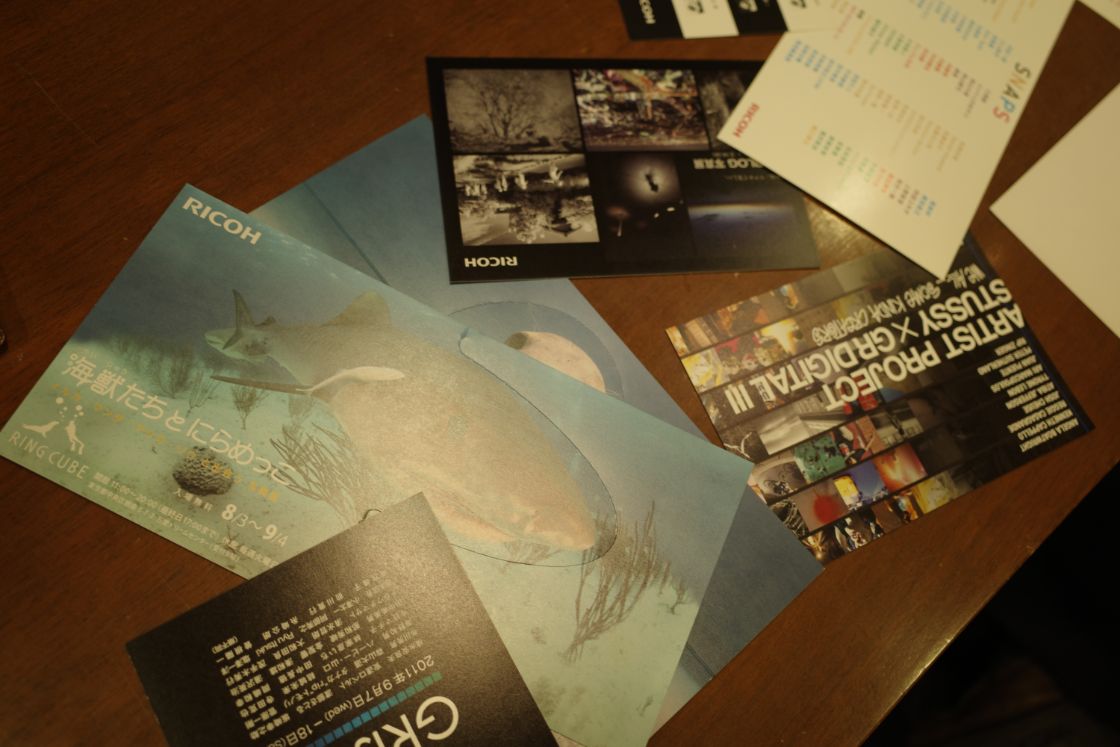
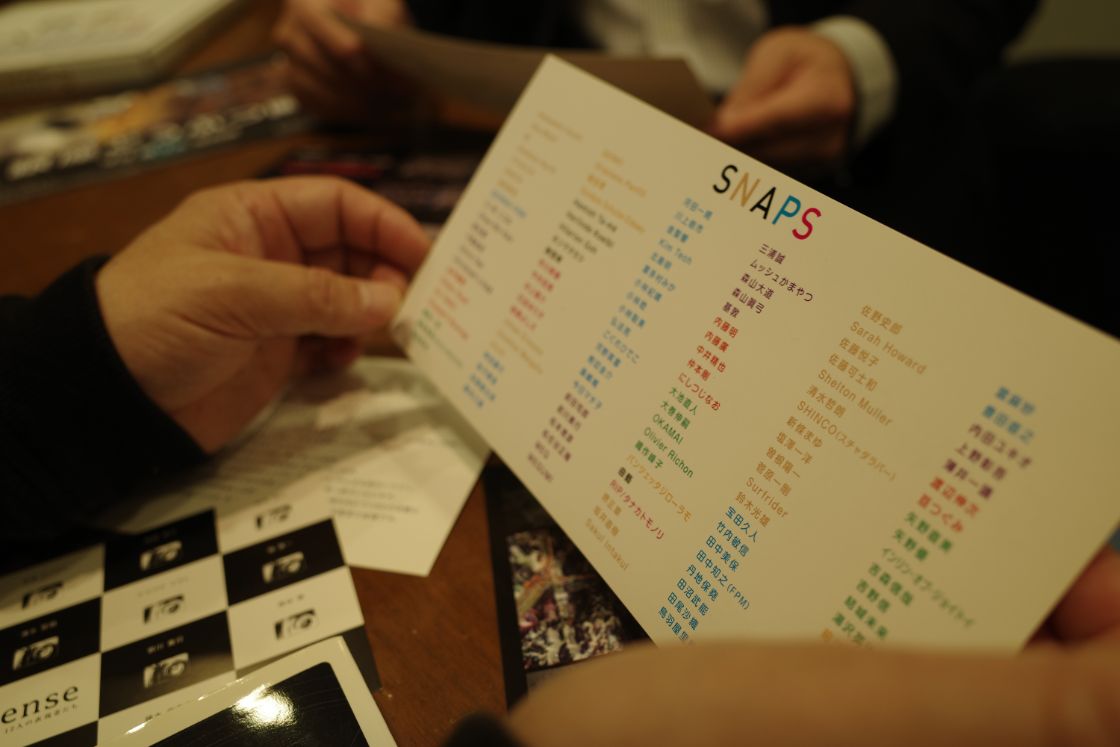
Postcards from the time of RING CUBE. They were made according to the characteristics of each exhibit. It is surprising to see the list of exhibitors of the SNAP exhibition because many of them are big names in various fields.
Ikenaga (hereafter: I): The gallery “A.W.P” started on April 25, 2013, reopening as a lounge-type gallery where you can spend your time sitting down on sofas, tables, counter seats, etc. It is a luxurious space and you can enjoy photobooks while drinking coffee. That's why we decided to set the admission fee, which is not common for camera makers’ galleries.
N: At that time, we were told by the company that a gallery with no profit was unnecessary, so it was a regeneration plan made with Mr. Ikenaga for its survival. Although it was a tough decision, I wanted it to be a unique gallery that we would be proud of later instead of compromising on sales. Mr. Ikenaga and I shared the same concept, so it was a fun job. As a result, we have sold a lot of photographs.
M: It is common that commercial galleries have no charge and museums have admission fees but sell no photo. We were an unconventional gallery where you pay to get in and buy photos (laughs).
I: Many members have become our Family Members, our photography club members, because if you are a member, you don’t have to pay to get in. We had hard time being understood because it was new.
M: Some customers really got upset. "Do you take money to show photos?" I would often explain and ask for understanding.
I: It was difficult in the beginning. We had to make it worth paying. We wanted to make exhibitions that other camera makers’ galleries couldn’t. As a result, we have had as many as 70 exhibitions in total. It was particularly significant to have Ansel Adams exhibition. We exhibited his new prints by Alan Ross, the only printer who is allowed to handle Ansel Adams’s negatives. Many customers came from afar to see the original prints. I witnessed the power of original prints and realized that it was the gallery's mission. And we sold more pictures than we had expected.
M: That was great.
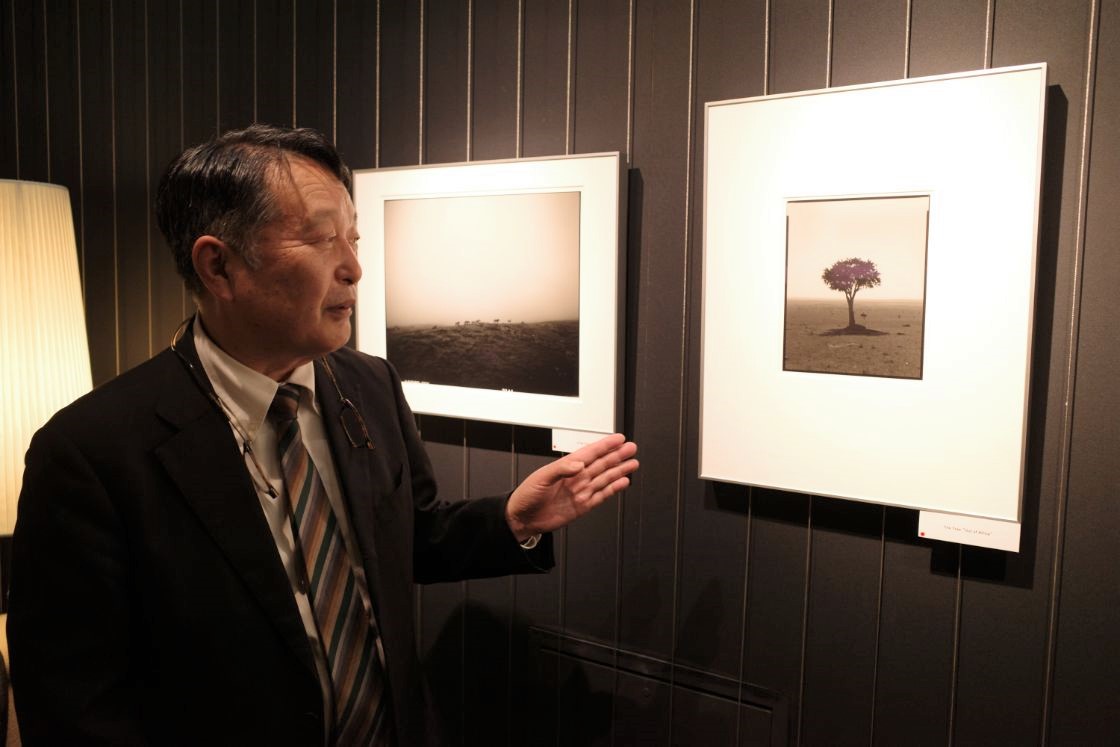
"There are many black and white works this year," says Mr. Ikenaga. We talked in the gallery amid the final exhibition "The secret"
I: We have had exhibitions of various genres. For Hollywood photos, Audrey Hepburn and Marilyn Monroe. For music, we had rock and jazz photo exhibitions. The highlight was that we made our record of attendance with the exhibition of Patty Boyd, a former Mrs. George Harrison of the Beatles.
N: I saw almost all of them. I really wanted to buy a Hepburn print.
I: Because I have worked for A.W.P, I have come to realize that many photographers not only take pictures but also like seeing them. We have been selling the work and selling is all about communicating with the customers. Under such circumstances, the exhibition "The Secret", a charity exhibition inherited from RING CUBE, contributed greatly. With the help of photographers, you can buy a print for 50,000 yen and donate at the same time. Many people buy prints for the first time in this exhibition.
N: The concept of "The secret" resonates with the one of the gallery. Are there any customers who have bought more than once?
M: Oh yes. Also, as Mr. Ikenaga said, some people buy a photo for the first time in their life. So I think we have been doing something significant. I’m certain that the concept of "You can only see here" or "You can only experience here" from the time of RING CUBE is still alive.
N: It’s been 11 years and a half since the opening on October 21, 2008.
M: Time flies.
N: Really. Looking back now, it may be because of the inconvenience of the gallery, which is not a white square cube, that have made us to be creative how to utilize it.
M: In A.W.P, it is dark and works are highlighted by spotlights. You can make unique exhibitions by using the unique shapes of the walls. The fact that the gallery was round and you can’t see the entire area gives the space some depth. It really is an exhibiting space for photographs.
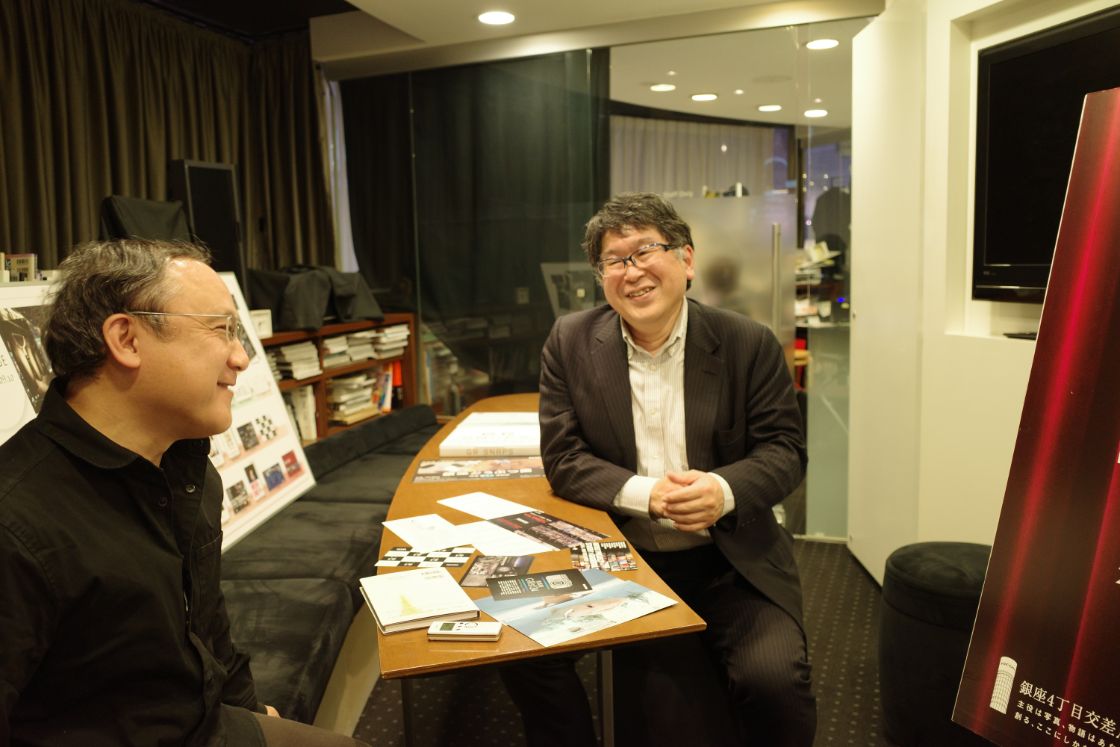
N: In doing this kind of work, you gradually have better eyes to see photos and more opportunities to talk with photographers. Because of that, you may well think that you have become an expert on seeing photography and go like “let me see you work for you" or “I’ll exhibit your work for you.” You have to be careful not to be like that. One time, one of us told a photographer, “oh, you've improved a lot." How authoritarian! I think it's important to remember the standpoint of our job where you are not professional and look at photos from an amateur's point of view.
M: That’s true. What is important is to communicate through photos. This place has been the best for that. In the staff room, we can’t even eat lunch because customers can see it (laughs), but can communicate with them. It’s been fun. If you don't enjoy it, it's not worth it. I will continue to value communications with customers in Square Tokyo.
N: Together with the gallery in Shinjuku, it will become the new “Ricoh Imaging Square Tokyo”, but I hope this kind of DNA of Ginza, or some sort of challenging spirit, will remain. It is easier to have regulars' group exhibitions and draw many visitors, but you should always keep in mind that the quality of photos is prior because it determines the status of the gallery. The first year is important. I know it will be hard but do your best! And remember that you are fortunate enough to do the work that everyone wants to do. You are doing something valuable.
M: Yes, I will! Finally, I would like to thank those who have visited the gallery in many years. Thank you very much.
I: It must be a destiny that the last exhibition of Gallery A.W.P is "The Secret". I’m reminded once again that we have been supported by our fans. Thank you very much.
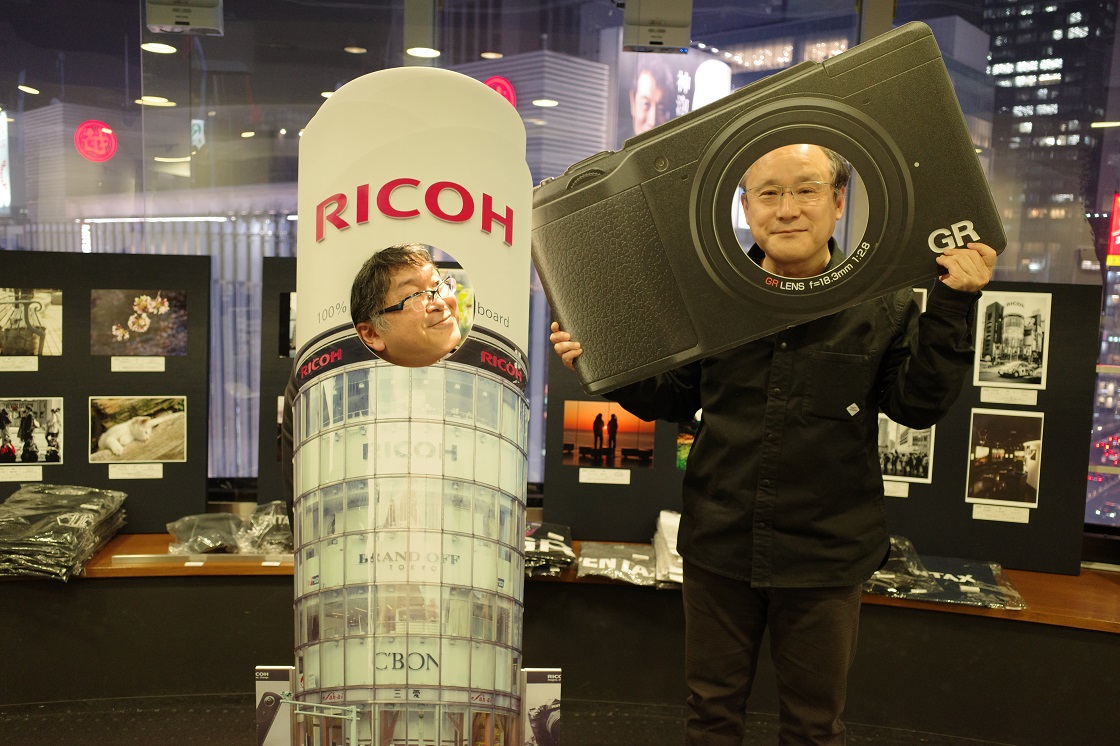
-And the last day of Ricoh Imaging Square Ginza, February 29, 2020.
On this day, so many people visited all day since the morning. We spent the whole day worrying If more customers came, they might not fit in the place!
There were many fans on the 9th floor who came to say goodbye! On the sofa in the back, they started taking photos of their cameras.
It might be polite to invite and thank each and every one of the photographers, those who have been involved since the foundation of the gallery, and the volunteers “Doughnuts”, but we had to give it up due to the coronavirus situations.
I would like to take this opportunity to thank everyone of you who have supported us.
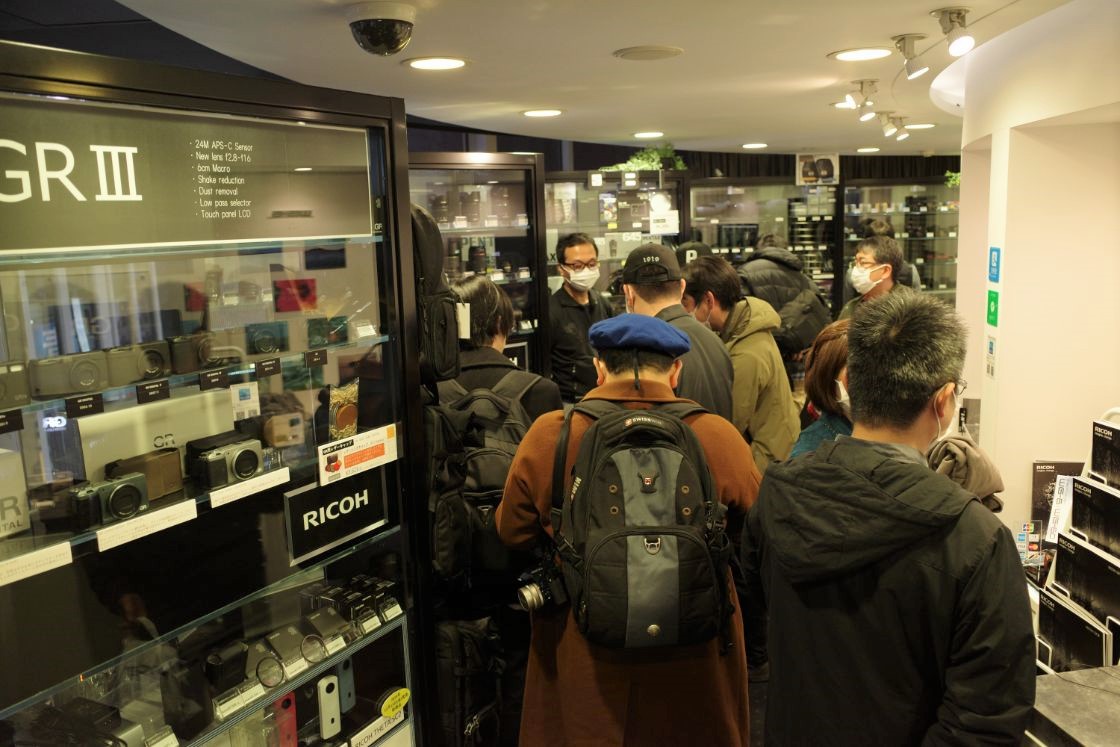
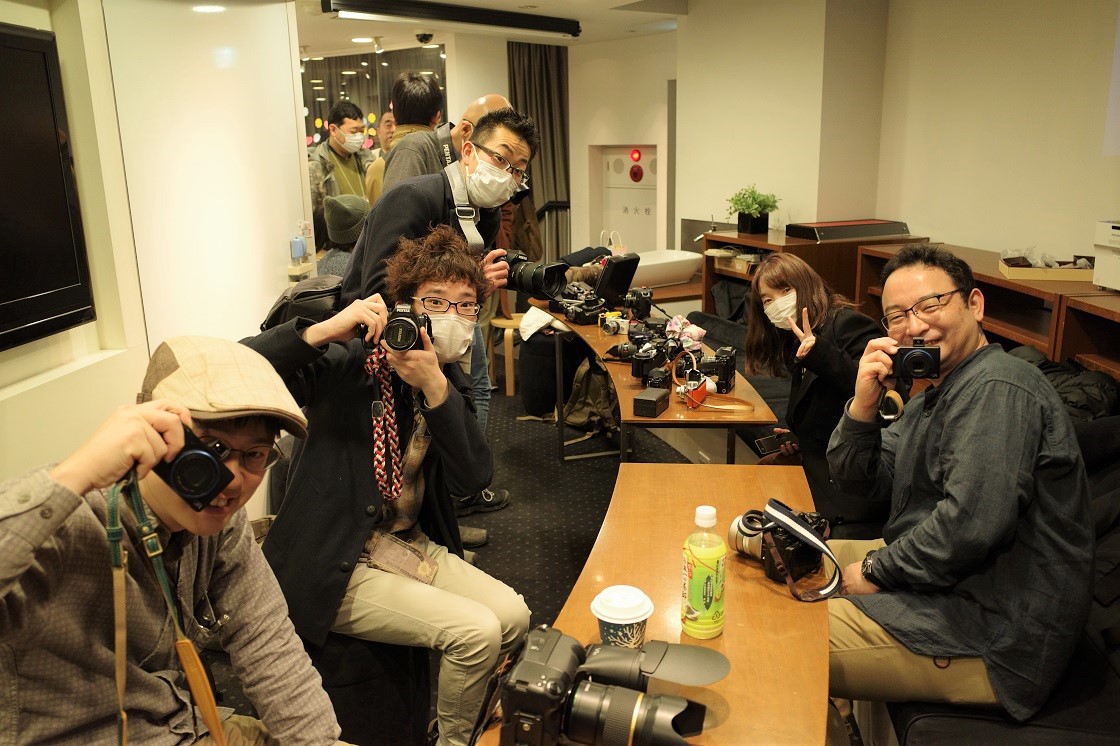
When I pointed the camera, everyone at the table looked at me! For our memory
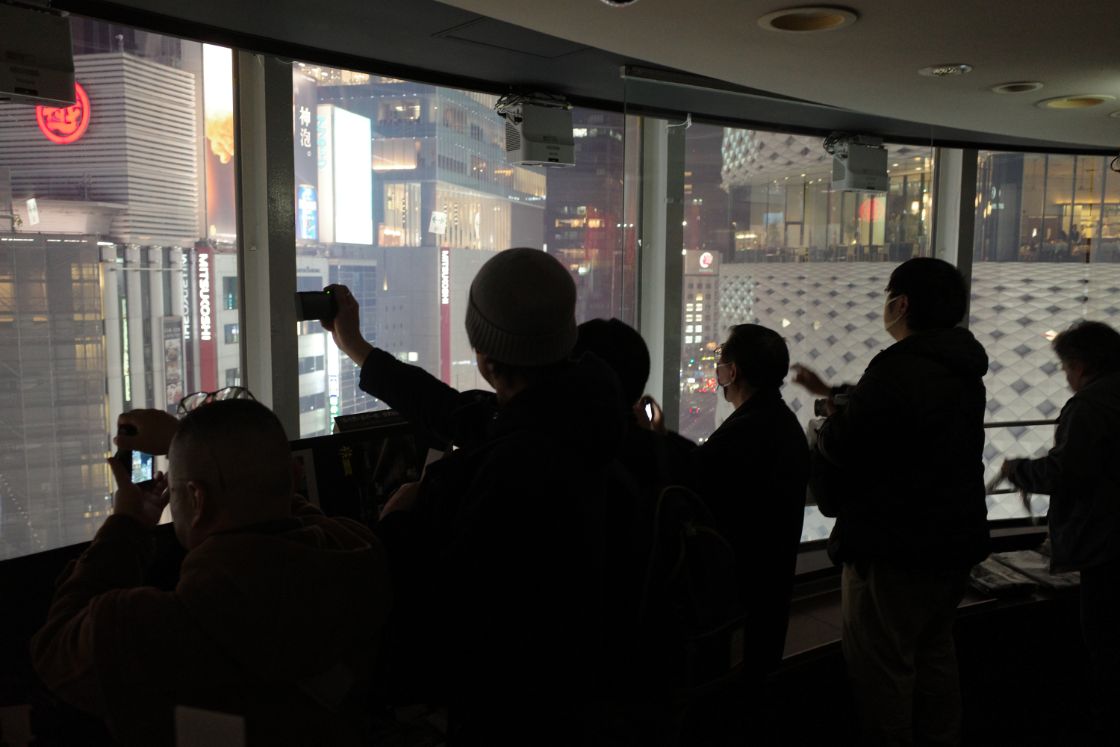
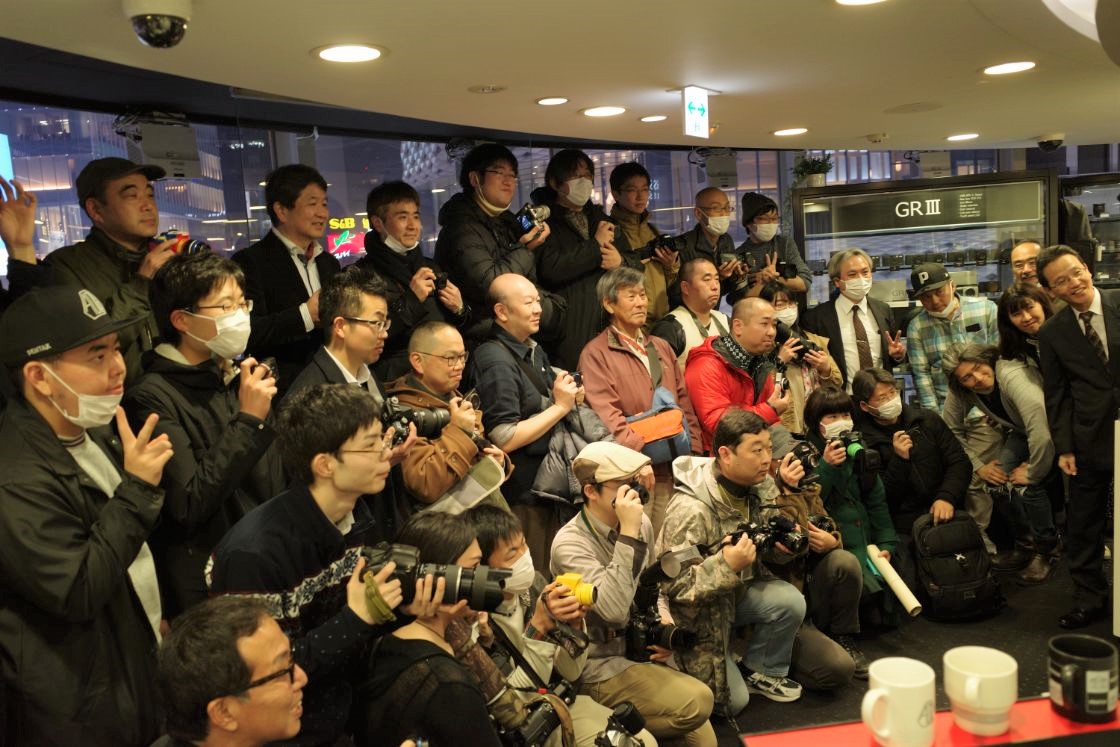
For 30 minutes from 19:30, the lights on the floor were turned off so that the night view of Ginza could be easily photographed. A group photo of the fans who stayed until closing (you can see the photo from the front here)
-Comments from members of Ricoh Imaging Square Ginza-
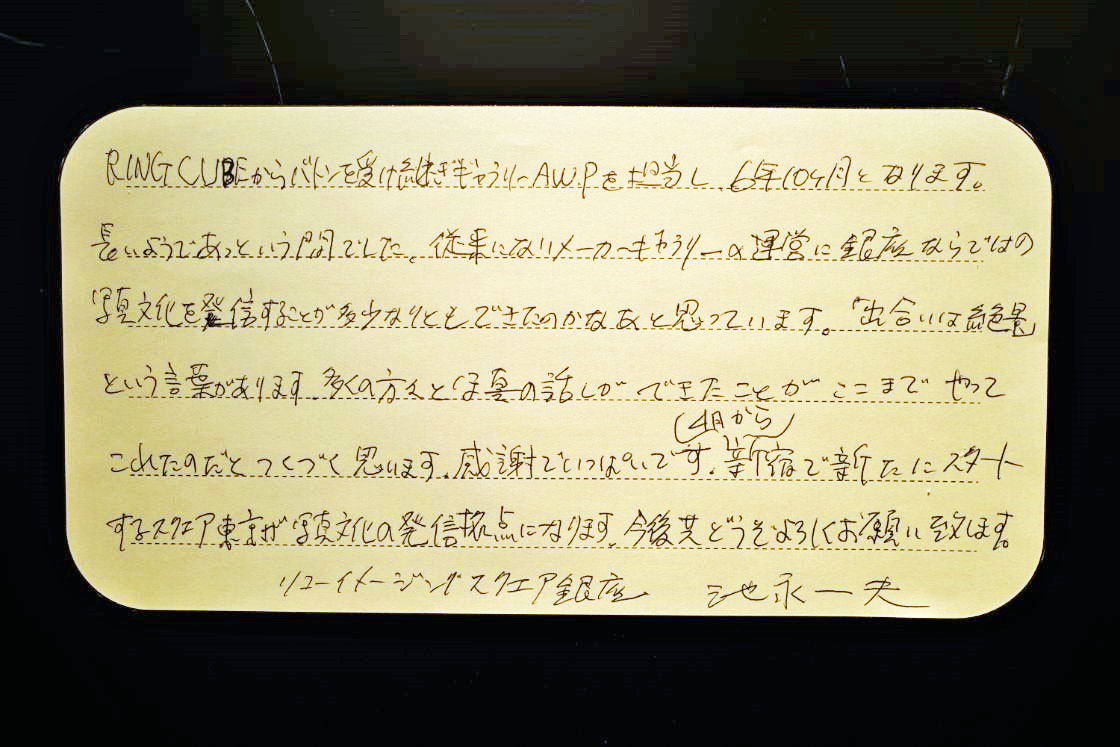
Kazuo Ikenaga
Having received the baton from RING CUBE, I have been in charge of the gallery A.W.P for 6 years and 10 months. It has been long but seems so short. I believe I have been able to somehow introduce new photography culture unique to Ginza, which is different from conventional camera makers’ galleries. There is a saying “to meet is to have a superb view". Having been able to talk about photography with many people, I have come this far. I very grateful. Square Tokyo, which will be newly launched in Shinjuku from April, will be the center of photography culture. Thank you.
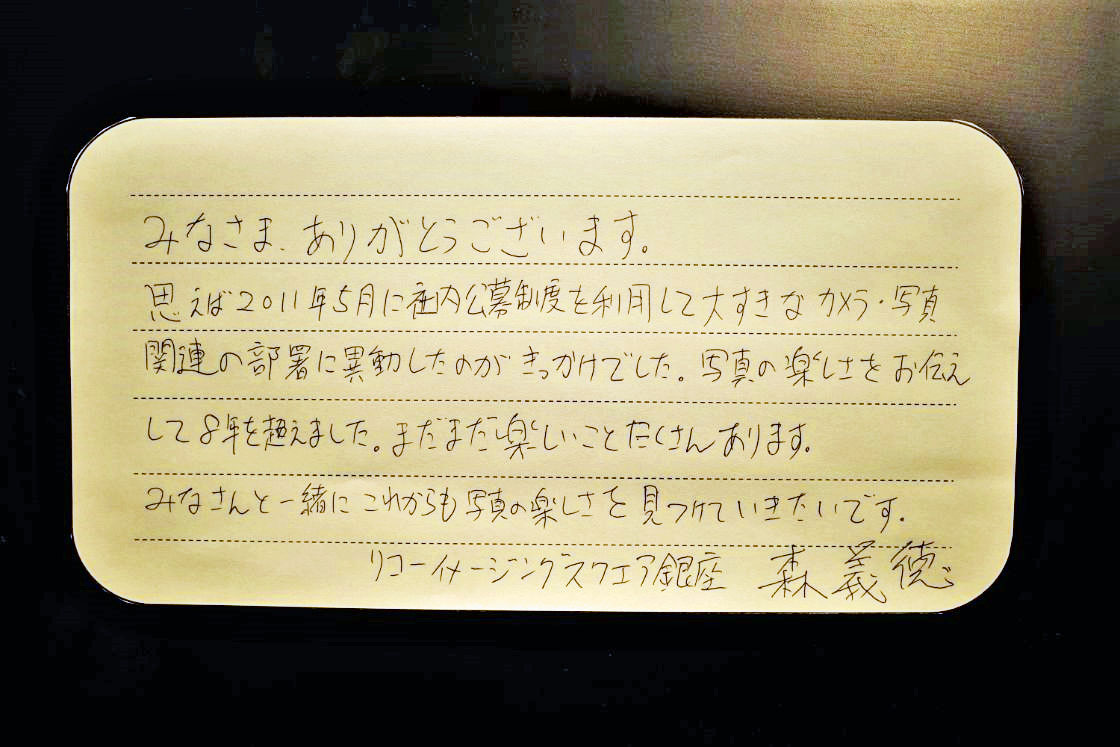
Yoshinori Mori
Thank you everyone. It was in March 2011 when I moved to my favorite camera and photography department through the internal recruitment. I have been sharing the joy of photography for over 8 years. There are still many good things. I will continue to discover more joy of photography with you.
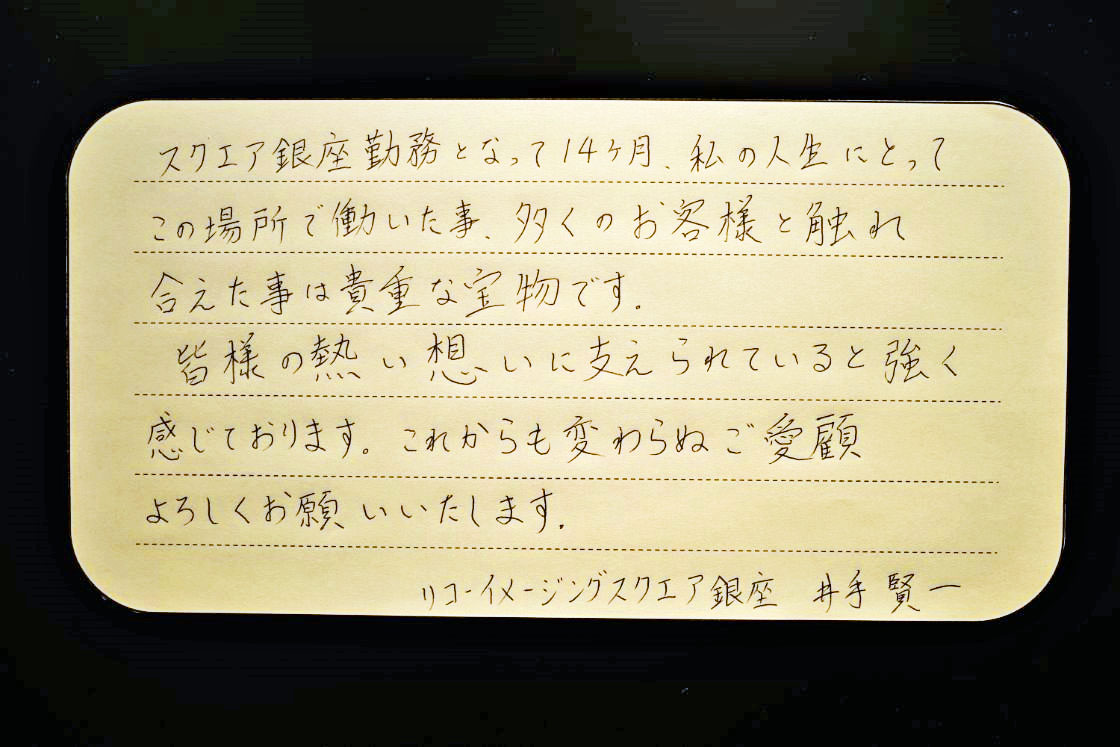
Kenichi Ide
For 14 months at Square Ginza, working at this place and meeting many customers is a treasure in my life. I feel we are strongly supported by your passion. Hope you will continue to be with us.
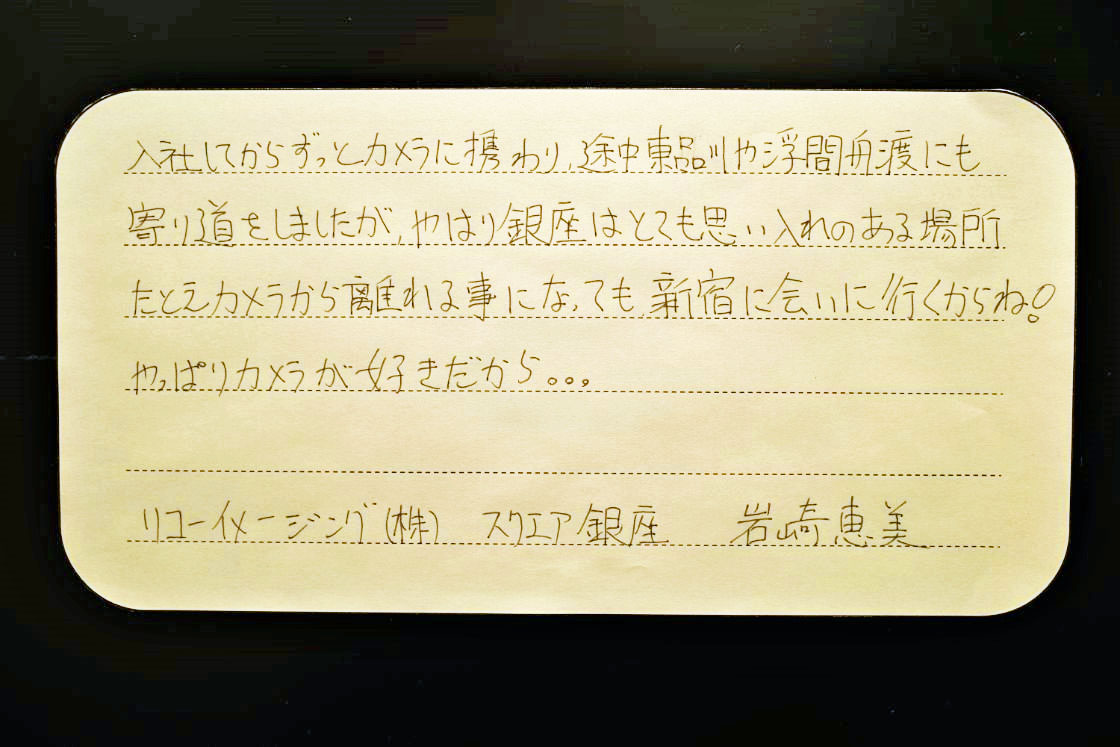
Emi Iwasaki
I've been working with cameras since I joined the company. Having worked in Higashi-Shinagawa and Ukima-Funato on the way, Ginza is a place that I'm very fond of. Even if I go to a department other than camera, I will go to Shinjuku to see you! Because you know I love cameras.
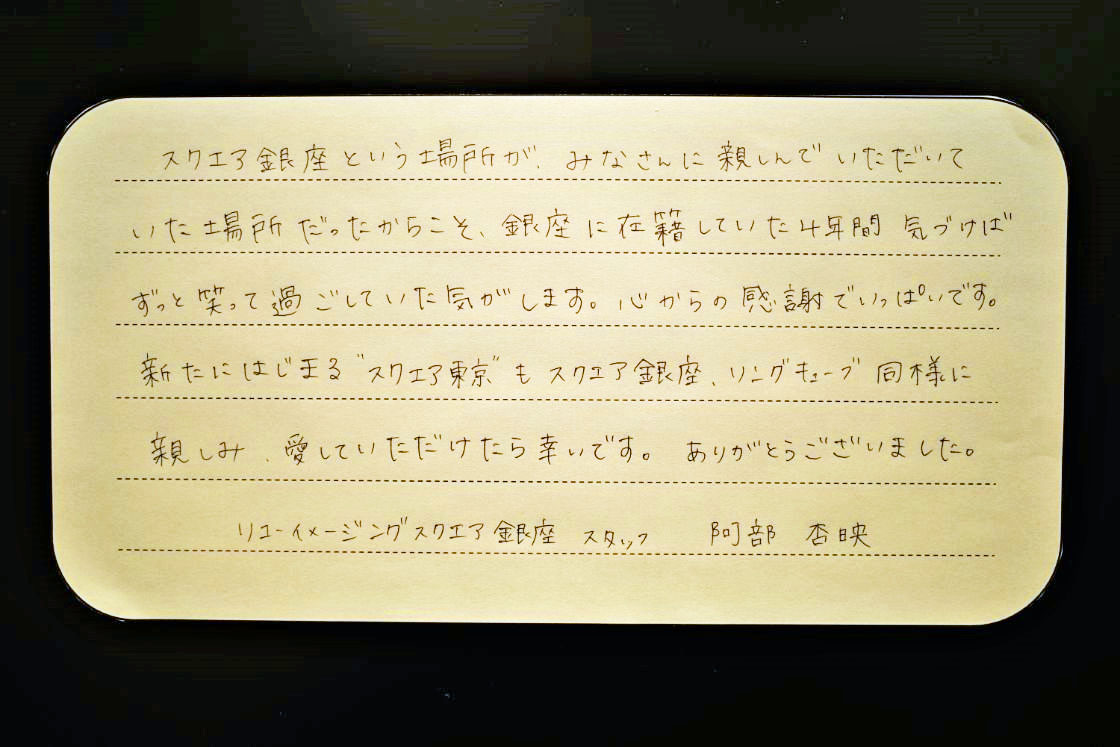
Momoe Abe
Since Square Ginza has been a place many of you love, I find myself always smiling for the past 4 years since I joined. I am sincerely thankful. Hope you will love the new "Square Tokyo", as much as Square Ginza and RING CUBE. Thank you.
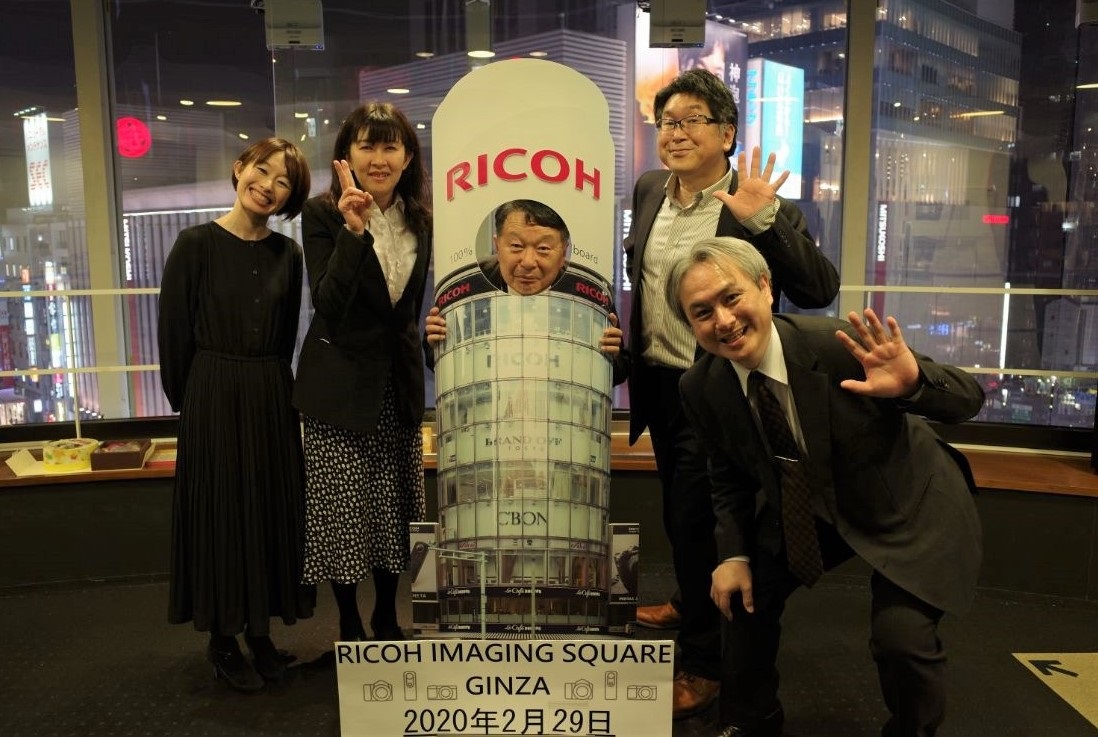
Photo of Ricoh Imaging Square Ginza members “On the last day, so many fans came to say goodbye. We were reminded that we were supported by them. Thank you.”
Thank you very much for visiting Ricoh Imaging Square Ginza!
Please visit Ricoh Imaging Square Tokyo from April.
(Machuko@)
